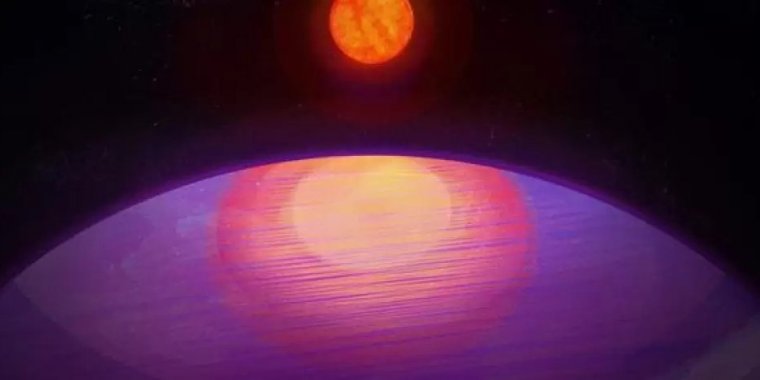| News / Space News |
Discovery of planet too big for its sun throws off solar system formation models
The discovery of a planet that is far too massive for its sun is calling into question what was previously understood about the formation of planets and their solar systems, according to Penn State researchers.

Artistic rendering of the possible view from LHS 3154b toward its low mass host star. Photo: Penn State
Researchers report the discovery of a planet more than 13 times as massive as Earth orbiting the "ultracool" star LHS 3154, which itself is nine times less massive than the sun.
The mass ratio of the newly found planet with its host star is more than 100 times higher than that of Earth and the sun.
The finding reveals the most massive known planet in a close orbit around an ultracool dwarf star, the least massive and coldest stars in the universe.
The discovery goes against what current theories would predict in planet formation around small stars and marks the first time a planet with such high mass has been spotted orbiting such a low-mass star.
"This discovery really drives home the point of just how little we know about the universe," said Suvrath Mahadevan at Penn State, a co-author of the paper. "We wouldn't expect a planet this heavy around such a low-mass star to exist."
Stars are formed from large clouds of gas and dust. After the star is formed, the remaining gas and dust orbit the newborn star as disks of material, which can eventually develop into planets.
"The planet-forming disk around the low-mass star LHS 3154 is not expected to have enough solid mass to make this planet," Mahadevan said. "But it's out there, so now we need to reexamine our understanding of how planets and stars form."
The researchers spotted the oversized planet, named LHS 3154b, using an astronomical spectrograph built at Penn State by a team of scientists led by Mahadevan.
The instrument, called the Habitable Zone Planet Finder, was designed to detect planets orbiting the coolest stars outside our solar system with the potential for having liquid water — a key ingredient for life — on their surfaces. (U.S. National Science Foundation)
YOU MAY ALSO LIKE





